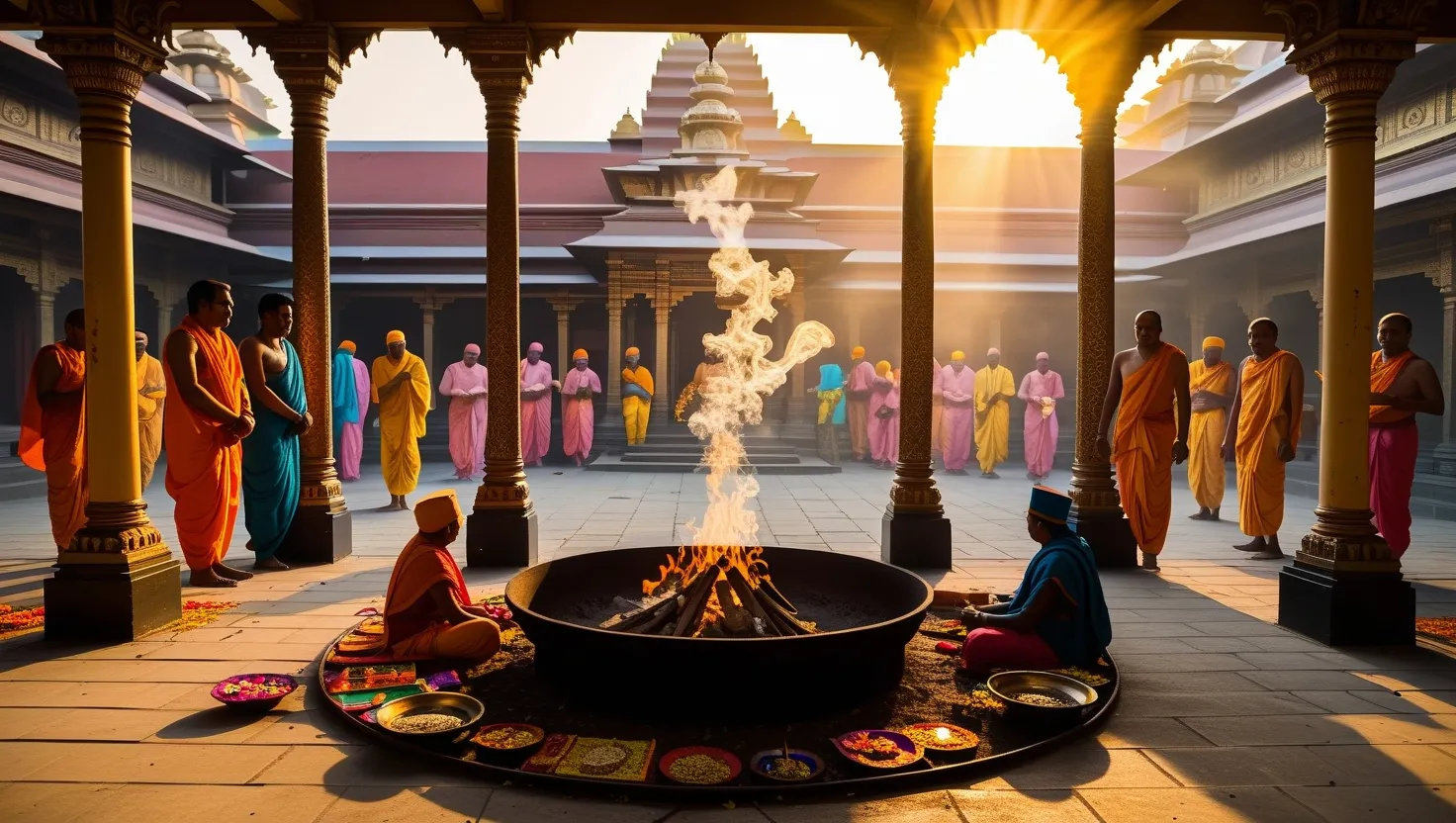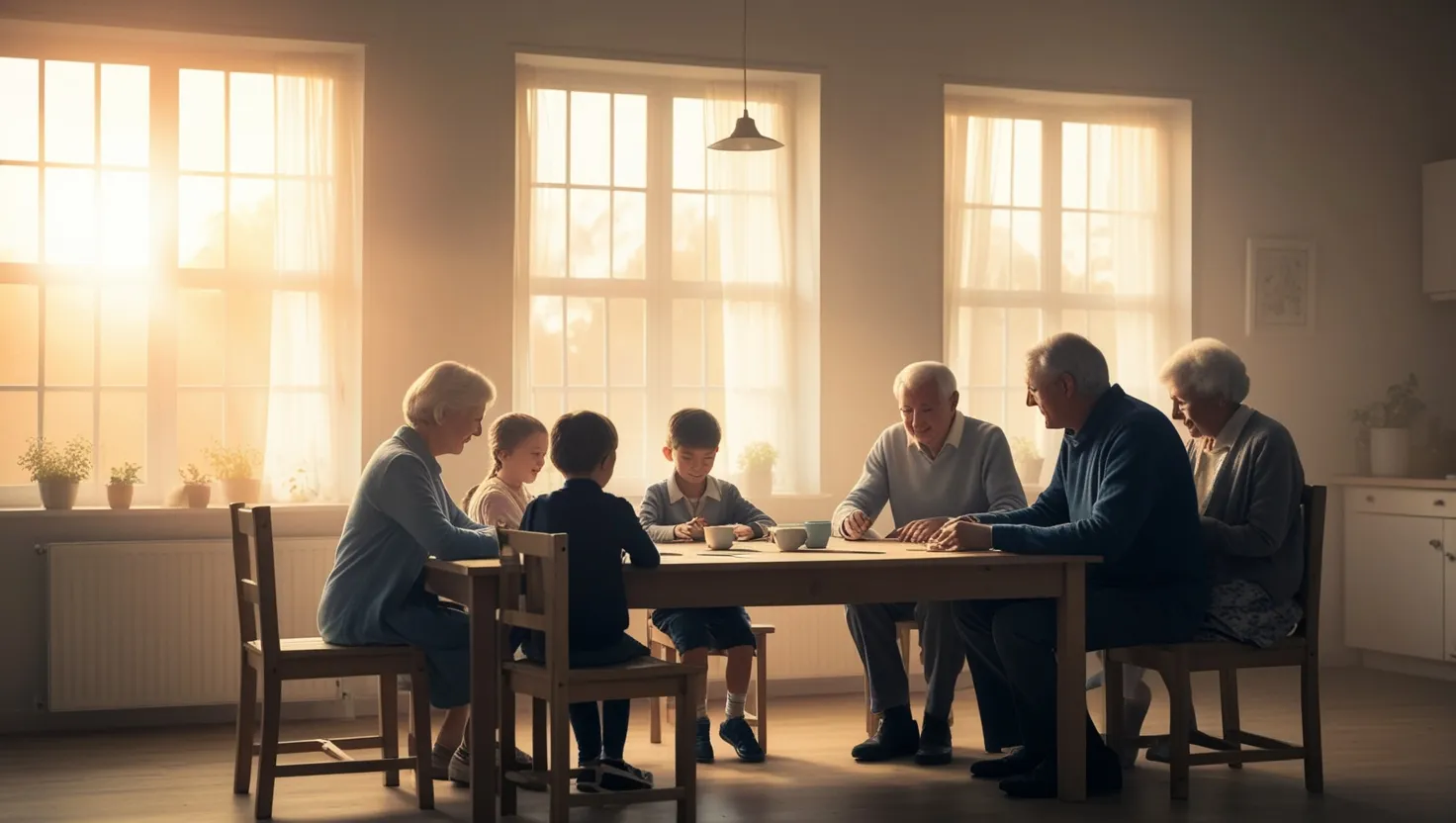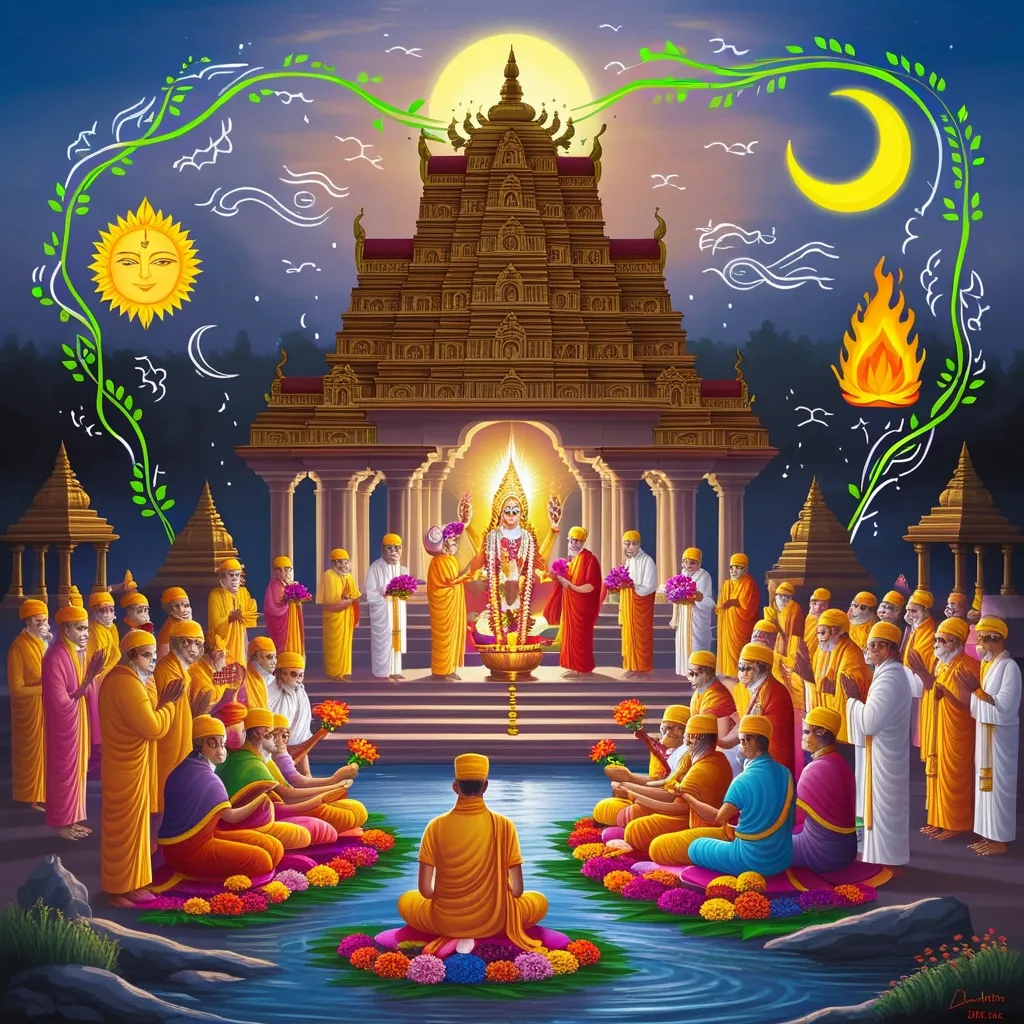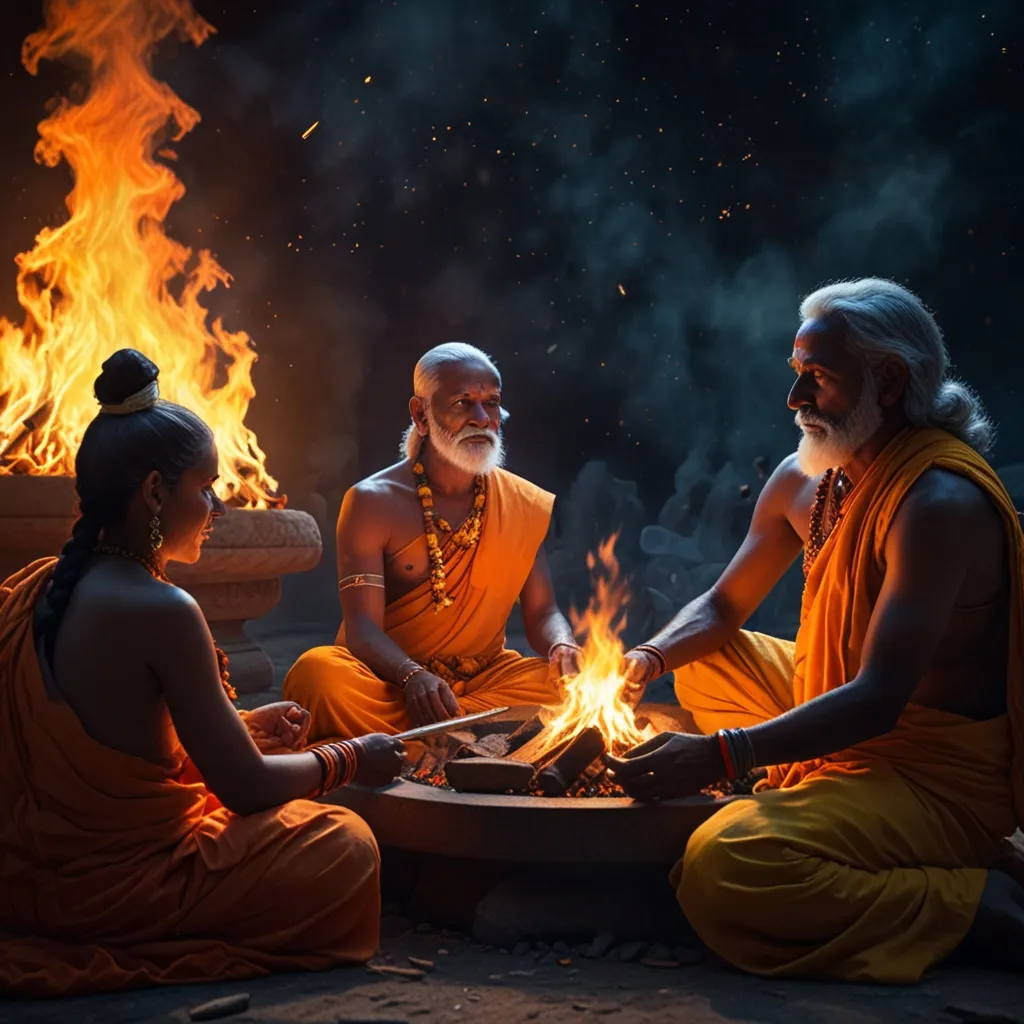The Mandukya Upanishad is a little gem in Hindu philosophy, part of the Atharva Veda. It packs a punch with just twelve mantras, yet it’s bursting with wisdom about reality and the ultimate truth.
This scripture zooms in on the power of the syllable Om, a sound that’s basically the universe’s soundtrack. Imagine everything in the past, present, and future wrapped up in that tiny sound. Om is pure consciousness, the ultimate source that’s beyond time, space, and all that jazz. It’s like the universe’s original name.
The Upanishad breaks down four states of consciousness linked to Om. There’s waking (A), dreaming (U), deep sleep (M), and then there’s turiya. Turiya is the big deal here – it’s this silent, elusive state that transcends the others. Getting a handle on these states is key to understanding life and the universe.
For those on a quest for liberation, the Mandukya Upanishad is a must-read. It’s a no-nonsense guide that lays out the straight facts about human nature and reality, skipping the analogies and stories you might find in other scriptures.
Gaudapada’s commentary on this Upanishad, called the Mandukya Karika, is crucial. Gaudapada, a big name in Advaita Vedanta, talks about non-duality and the need to move beyond worldly distractions. His teachings have a hint of Buddhist thought too, focusing on the deep analysis of reality.
The Upanishad also touches on the concept of the four-footed Atman, symbolizing those states of consciousness. These states aren’t physical but aspects of the self that must be transcended for spiritual freedom. The endgame is realizing that the individual self (jiva) is one with the universal self (Brahman).
Meditating on Om is a practical tip from the Mandukya Upanishad for growing spiritual awareness. But it advises against using Om as your only mantra if you’re just starting out, as it could lead to a retreat from everyday responsibilities. Om is best for those ready to dive deep inward.
For beginners, mixing Om into daily practices or longer mantras like Gayatri or Maha Mrityunjaya can be a good start. This helps you tune into the deeper mind and heart, a reminder of your eternal, unchanging source.
In the end, the Mandukya Upanishad drives home the idea of realizing your true nature as Brahman. It’s all about understanding that Brahman pervades everything and recognizing that the self is a manifestation of this universal consciousness. This realization is the ticket to liberation and merging with ultimate reality.
So, the Mandukya Upanishad is short but mighty, providing deep insights into reality and consciousness. It highlights the power of Om and the four states of consciousness, offering a straightforward path to understanding and realizing the ultimate truth.






